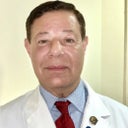I had my second Botox treatment about 2 and 1/2 months ago in my forehead and crows feet. I can now move my forehead again completely. Isn't it suppose to last longer? I only waited 4 months between each treatment. My crows feet are not as bad though. But it's completely gone in my forehead do I need more Botox next time so it lasts longer?
Answers (11)
From board-certified doctors and trusted medical professionals

Dr. Nelson Lee Novick, MD
Dermatologic Surgeon, Board Certified in Dermatology
Answer

Dr. Ron Shelton, MD
Dermatologic Surgeon, Board Certified in Dermatology
Answer

Dr. Brian S. Biesman, MD
Oculoplastic Surgeon, Board Certified in Ophthalmology
Answer
Dr. Cameron Rokhsar, MD, FAAD
Dermatologic Surgeon, Board Certified in Dermatology
Answer
More Botox Questions
See all Botox Q&AWE SEND PRETTY
EMAILS
What’s trending? Who’s turning heads? Which TikTok myths need busting? We’ve got you. No fluff, no gatekeeping—just real talk. Get our free, unfiltered newsletter.


